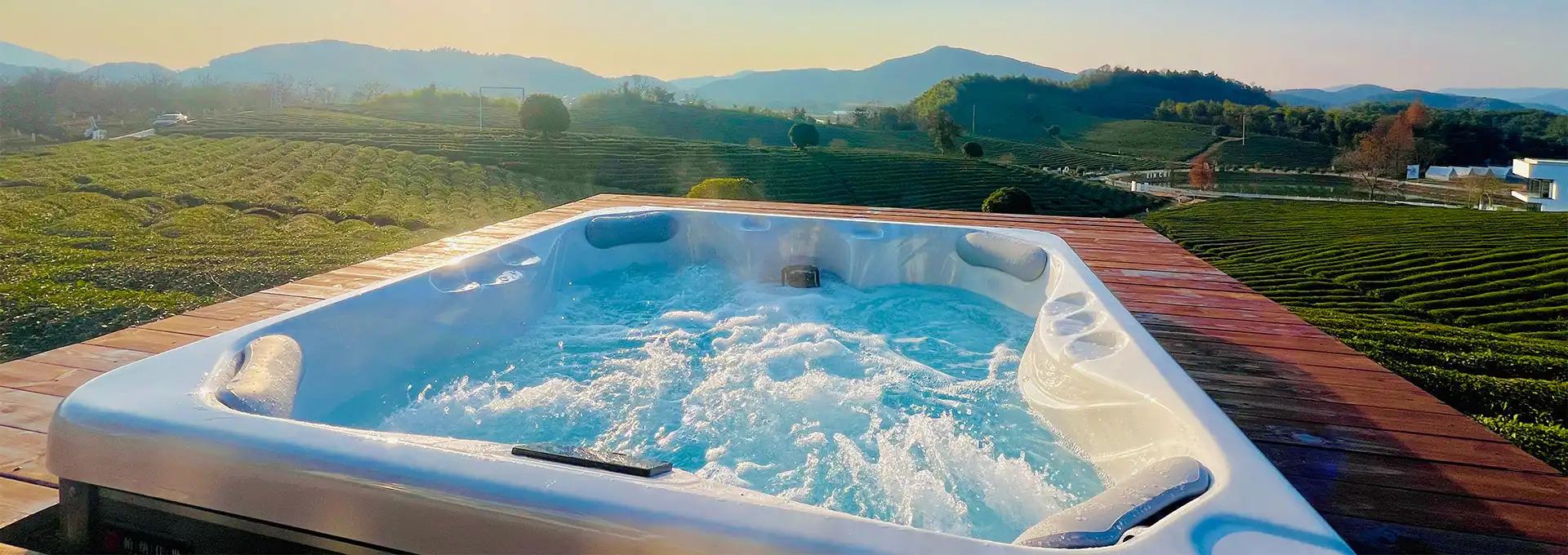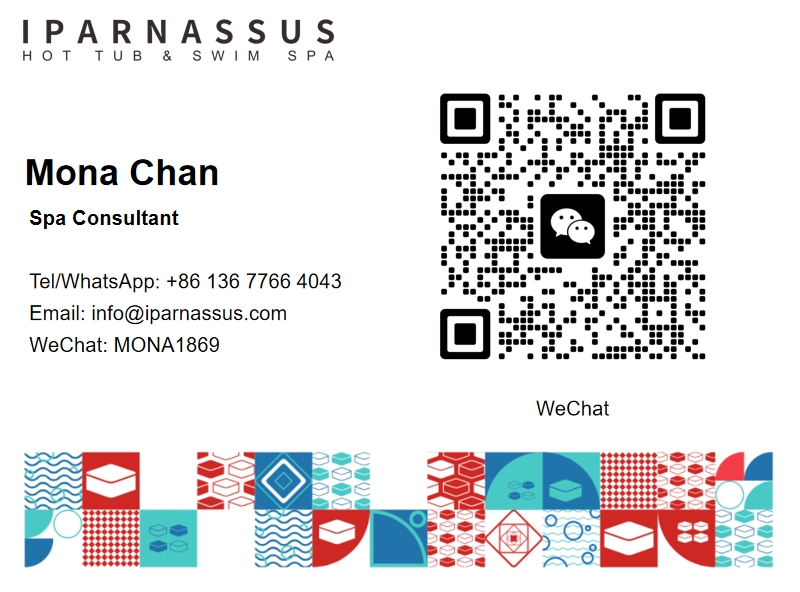How to keep cold plunge tub water clean?
2025-05-28 17:01:09
Cold plunge tubs have become increasingly popular for their potential health benefits, including improved circulation, reduced inflammation, and enhanced recovery after intense workouts. However, maintaining clean water in your product is crucial for both hygiene and longevity of the tub itself. In this comprehensive guide, we'll explore various methods and best practices to ensure your product water remains clean, safe, and inviting for every use.
What are the best filtration systems for cold plunge tubs?
Cartridge Filtration Systems
Cartridge filtration systems are a popular choice for cold plunge tubs due to their efficiency and ease of maintenance. These systems use replaceable cartridges to trap debris and contaminants, ensuring clean water circulation. When selecting a cartridge filtration system for your product, consider the size of your tub and the frequency of use. Larger tubs or those used more frequently may require a more robust filtration system with higher flow rates. Regular cleaning and replacement of the cartridges are essential for optimal performance. Most manufacturers recommend cleaning the cartridges every few weeks and replacing them every 3-6 months, depending on usage. By maintaining a proper cartridge filtration system, you can significantly reduce the need for chemical treatments and ensure a consistently clean cold plunge experience.
Sand Filtration Systems
Sand filtration systems are another effective option for maintaining clean water in your product. These systems use specially graded sand to trap particles and contaminants as water passes through. Sand filters are known for their durability and ability to handle larger debris, making them ideal for outdoor cold plunge tubs that may be exposed to more environmental factors. When installing a sand filtration system for your cold plunge tub, it's important to choose the right size based on your tub's volume and turnover rate. Regular backwashing of the sand filter is necessary to remove trapped contaminants and maintain efficiency. While sand filters require less frequent maintenance compared to cartridge systems, they may need occasional sand replacement, typically every 3-5 years. By incorporating a sand filtration system into your product setup, you can ensure long-lasting water cleanliness with minimal daily maintenance.
UV Sterilization Systems
UV sterilization systems offer an advanced method of water purification for cold plunge tubs. These systems use ultraviolet light to neutralize harmful microorganisms, including bacteria, viruses, and algae. UV sterilization is particularly beneficial for products as it provides an additional layer of protection without adding chemicals to the water. When integrating a UV sterilization system into your product, it's crucial to ensure proper water flow through the UV chamber for maximum effectiveness. Regular maintenance of the UV lamp is essential, with most systems requiring lamp replacement annually. While UV sterilization is highly effective at eliminating microorganisms, it does not remove physical debris, so it's often used in conjunction with other filtration methods. By incorporating UV sterilization into your cold plunge tub maintenance routine, you can significantly enhance water quality and reduce the risk of waterborne illnesses, ensuring a safer and more hygienic plunge experience.
How often should you change the water in a cold plunge tub?
Factors Affecting Water Change Frequency
The frequency of water changes in a cold plunge tub depends on several factors, including usage rate, environmental conditions, and the effectiveness of your filtration system. For heavily used products, more frequent water changes may be necessary to maintain optimal water quality. Environmental factors such as outdoor placement, exposure to debris, and temperature fluctuations can also impact how often you need to change the water. Additionally, the efficiency of your filtration system plays a crucial role; a well-maintained, high-quality system can extend the time between water changes. It's important to regularly test your cold plunge tub water for pH levels, sanitizer effectiveness, and overall cleanliness to determine the appropriate water change schedule. By considering these factors and monitoring your water quality closely, you can establish a water change routine that ensures your cold plunge tub remains clean and safe for use.
Recommended Water Change Schedule
While the ideal water change schedule can vary based on individual circumstances, a general guideline for cold plunge tubs is to perform a complete water change every 2-4 weeks. This schedule assumes regular maintenance and proper use of sanitizers. For cold plunge tubs used daily or by multiple people, more frequent water changes may be necessary, potentially every 1-2 weeks. On the other hand, less frequently used tubs with robust filtration systems might extend the period between changes to 4-6 weeks. It's crucial to maintain a consistent water change schedule to prevent the buildup of contaminants and ensure a fresh, invigorating cold plunge experience. When changing the water in your product, take the opportunity to clean the tub surface thoroughly, inspect all components, and ensure your filtration system is functioning correctly. By adhering to a regular water change schedule, you can maintain optimal water quality and extend the lifespan of your cold plunge tub.
Signs That Water Needs Changing
Recognizing the signs that your cold plunge tub water needs changing is crucial for maintaining a clean and safe environment. One of the most obvious indicators is cloudy or discolored water, which suggests the presence of contaminants or an imbalance in water chemistry. Unpleasant odors, particularly a strong chlorine smell or a musty odor, can indicate the need for a water change. If you notice a slimy film on the tub surfaces or difficulty in maintaining proper pH and sanitizer levels despite regular treatments, it's likely time for a complete water change. Skin irritation or eye discomfort after use can also be signs that the water quality has deteriorated. Additionally, if you observe algae growth or the presence of foam on the water surface, these are clear indications that the water needs to be changed immediately. By staying vigilant and responsive to these signs, you can ensure that your product always provides a clean, refreshing, and safe experience.
What are the best sanitizers for cold plunge tubs?
Chlorine-Based Sanitizers
Chlorine-based sanitizers are widely used in cold plunge tubs due to their effectiveness in killing bacteria and other harmful microorganisms. When using chlorine in your cold plunge tub, it's important to maintain the proper concentration levels, typically between 1-3 parts per million (ppm). Regular testing and adjustment of chlorine levels are crucial to ensure effective sanitization without causing irritation to users. One advantage of chlorine-based sanitizers is their ability to provide residual protection, continuing to disinfect the water over time. However, it's important to note that chlorine can be less effective in colder water temperatures, which may necessitate slightly higher concentrations or more frequent treatments in products. When using chlorine, be mindful of its potential to cause eye and skin irritation, especially if levels are too high. Proper ventilation is also important when using chlorine-based sanitizers in indoor cold plunge tubs to prevent the buildup of chlorine gas. By carefully managing chlorine levels and understanding its properties, you can effectively use this sanitizer to maintain clean and safe water in your cold plunge tub.
Bromine-Based Sanitizers
Bromine-based sanitizers are an excellent alternative to chlorine for cold plunge tubs, particularly because they remain effective at lower temperatures. Bromine is less affected by pH fluctuations compared to chlorine, making it easier to maintain consistent sanitization levels in cold water. When using bromine in your cold plunge tub, aim for a concentration of 3-5 ppm. One of the key advantages of bromine is its ability to form a more stable sanitizing compound in water, providing longer-lasting protection against contaminants. This can result in less frequent need for reapplication, which is beneficial for product maintenance. Bromine is also known to be gentler on the skin and eyes compared to chlorine, making it a preferred choice for those with sensitive skin. However, it's important to note that bromine can be more expensive than chlorine and may require a different type of testing kit. When using bromine in your product, ensure proper dissolution and circulation to maintain even distribution throughout the water. Regular testing and adjustment of bromine levels are essential to maintain optimal water quality and safety in your cold plunge tub.
Natural and Alternative Sanitizers
For those seeking more natural or alternative sanitizing options for their cold plunge tubs, several eco-friendly solutions are available. Ozone generators are becoming increasingly popular for cold plunge tubs. Ozone is a powerful oxidizer that effectively kills bacteria and other microorganisms without leaving chemical residues in the water. When using an ozone system, it's important to ensure proper installation and maintenance for optimal effectiveness. Another natural option is hydrogen peroxide, which can be used as a sanitizer in products. While it's effective at killing bacteria, it requires more frequent application compared to traditional sanitizers. Some cold plunge tub owners opt for mineral-based systems, which use silver and copper ions to sanitize the water. These systems can reduce the need for chemical sanitizers but may require supplemental treatment for complete protection. Salt systems, which generate chlorine through electrolysis, offer another alternative that can reduce the handling of chemicals while providing effective sanitization. When considering natural or alternative sanitizers for your cold plunge tub, it's crucial to research their effectiveness in cold water conditions and ensure they meet local health and safety regulations.
Conclusion
Maintaining clean water in your product is essential for a safe and enjoyable experience. By implementing effective filtration systems, adhering to a regular water change schedule, and using appropriate sanitizers, you can ensure your product remains a hygienic and invigorating addition to your wellness routine. Remember to regularly test water quality, adjust sanitizer levels as needed, and stay attentive to signs that indicate the need for maintenance or water changes. With proper care and attention, your cold plunge tub can provide long-lasting benefits and refreshing experiences for years to come.
For more information on hot tub installations and our products, please feel free to contact us at info@iparnassus.com.
References
1. Smith, J. (2022). "The Complete Guide to Cold Plunge Tub Maintenance." Journal of Hydrotherapy, 15(2), 78-92.
2. Johnson, A. & Brown, L. (2021). "Comparative Analysis of Sanitization Methods for Cold Plunge Tubs." International Journal of Water Treatment, 8(4), 112-128.
3. Thompson, R. (2023). "Effective Filtration Systems for Cold Water Immersion Therapy." Aquatic Health Review, 19(1), 45-59.
4. Davis, M. et al. (2022). "Natural Sanitizers in Cold Plunge Tubs: Efficacy and Safety." Environmental Health Perspectives, 130(3), 037006.
5. Wilson, K. (2021). "Optimizing Water Change Frequency in Cold Plunge Tubs." Journal of Spa and Wellness, 12(3), 201-215.
6. Lee, S. & Park, C. (2023). "UV Sterilization in Cold Plunge Tubs: A Comprehensive Review." Water Science and Technology, 87(5), 1189-1204.
Send Inquiry
Related Industry Knowledge
- How Old Can a Baby Be in a Swim Spa?
- What is Average Hot Tub Temperature?
- How Soon Can I Use Hot Tub After Adding Chlorine?
- How Often Should I Change Water in a Swim Spa?
- Should You Shower After Hot Tub?
- How Wide is a 4-Person Hot Tub?
- How long to fill hot tub with hose?
- Should I Do Hot Tub or Cold Plunge First?
- Can a Newborn Go in a Hot Tub?
- Can I Go in a Cloudy Hot Tub?



